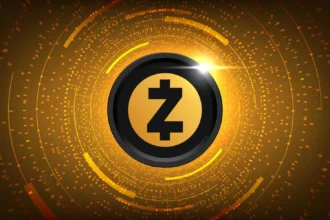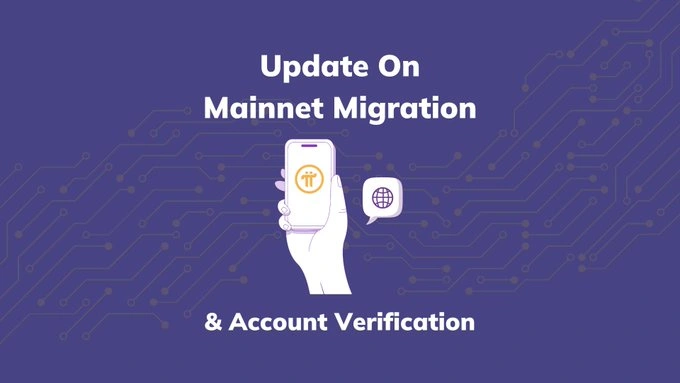Pi Network Mainnet Migration Resumes with Enhanced Email Verification Process
Pi Network, the innovative mobile-based cryptocurrency project that has been making waves in the blockchain space, is steadily progressing towards full decentralization. Following the successful launch of its open mainnet last month, Pi Network is rolling out new updates to improve security, streamline migration, and ensure a smoother transition for its global user base. In particular, the latest update focuses on an enhanced account verification process, including the shift to email-based two-factor authentication (2FA), marking a significant step forward for the platform.
In this article, we’ll dive into the key updates Pi Network introduced in March 2025 and what they mean for users looking to complete their mainnet migration process.
The Shift from Phone Numbers to Email-Based 2FA
Pi Network initially relied on phone numbers for account verification and authentication. This method worked efficiently during the platform’s early stages but began to face challenges as the network expanded internationally. As Pi Network attracted more users across different countries, problems such as inconsistent telecom regulations, SMS delivery failures, and carrier restrictions became frequent pain points. These issues hindered the verification process, causing frustration for users who were unable to verify their accounts or complete necessary actions due to SMS-related delays.
In response to these challenges, Pi Network decided to upgrade its security infrastructure by introducing email-based two-factor authentication (2FA). The shift from SMS to email authentication not only resolves the previous issues but also enhances security by offering a more reliable method for verifying user identities.
With this new email-based 2FA system, Pi Network users will be able to authenticate their accounts more efficiently, ensuring that only verified and legitimate users can access the platform. Additionally, this update lays the groundwork for future security features, including passkey and biometric authentication, that will further protect users and their assets.
Mainnet Migrations: A Secure Transition to the Blockchain
Mainnet migration is a critical step for Pi Network users, as it marks the official transition of their mined Pi coins to the blockchain. On March 13, 2025, Pi Network introduced a mandatory two-factor authentication (2FA) requirement for users to complete before their Pi coins could be successfully migrated to the Mainnet.
However, the migration process faced some hurdles due to the email verification challenges mentioned earlier. Many users had not linked an email address to their Pi Network account during the initial setup, and some had outdated or incorrect email addresses. In some cases, users had even used the same email for multiple accounts, which could pose a security risk.
To address these concerns, Pi Network temporarily paused mainnet migrations to conduct a thorough review of its email verification system. This pause allowed the team to analyze user verification processes and ensure that the necessary checks were in place before proceeding with migrations.
During this period, the team implemented additional security measures, including liveness checks and further SMS verification, to ensure that the email address on file was valid and that the user was the legitimate owner of the account. This was essential to maintain the integrity of the migration process and ensure that only verified users could transfer their Pi coins to the blockchain.
Migrations Resume: What This Means for Pioneers
Now that the necessary security checks and updates have been completed, Pi Network has officially resumed mainnet migrations. However, the process will be rolled out gradually to ensure stability and security. Pi Network is prioritizing a smooth transition over rushing the migration, as it understands the importance of maintaining a secure and reliable platform for its community of Pioneers.
For users, this means it’s time to verify your email address, enable 2FA, and complete any remaining authentication steps. Users who have not yet updated their account information, including their email address, should do so as soon as possible to ensure they can successfully complete the migration process.
How to Complete the Mainnet Migration Process
- Update Email Address: Make sure your email address is linked to your Pi Network account. If you haven’t added one yet, visit the account settings and add a trusted email address.
- Enable Two-Factor Authentication (2FA): Follow the instructions to set up email-based 2FA. This will involve verifying your email address and securing your account with an additional layer of protection.
- Complete KYC (Know Your Customer): Pi Network users who haven’t completed the KYC process must do so to verify their identity. This step is required before any mainnet migration can occur.
- Wait for Migration: Once you’ve completed the necessary steps, you’ll be placed in the queue for migration. Pi Network will gradually migrate users to the Mainnet, ensuring that each step of the process is done securely.
What’s Next for Pi Network?
Pi Network’s shift to email-based authentication and its ongoing mainnet migration are just the beginning. As the platform continues to evolve, Pi Network plans to introduce additional security features, expand its blockchain ecosystem, and build out more use cases for its native Pi cryptocurrency.
The transition to a fully decentralized network is a key milestone in Pi Network’s roadmap, and the latest updates are designed to ensure that the platform remains secure, scalable, and user-friendly for all of its Pioneers.
Frequently Asked Questions (FAQs)
- What is Pi Network’s mainnet migration? Pi Network’s mainnet migration is the process by which mined Pi coins are officially moved to the blockchain, allowing users to fully participate in the Pi Network ecosystem.
- Why did Pi Network switch from phone number verification to email-based 2FA? The switch to email-based 2FA was made to address issues with SMS delivery, telecom regulations, and to improve overall account security. Email-based authentication is more reliable and offers better long-term scalability.
- What should I do to ensure my mainnet migration is successful? To complete the migration, ensure your email address is linked to your account, enable two-factor authentication (2FA), and complete the KYC process.
- Is my Pi safe during the migration process? Yes, Pi Network has implemented additional security measures to protect user data and ensure the safe migration of Pi coins to the blockchain.
- What happens if I don’t complete the email verification? If you don’t complete the email verification, you may face delays in your mainnet migration. It is important to verify your email as soon as possible to ensure a smooth transition.
- When will the mainnet migration be fully completed? The migration process is rolling out gradually, so it may take some time before all users have successfully migrated. Pi Network is prioritizing security and stability in the process.
Conclusion
Pi Network’s mainnet migration update introduces important improvements that aim to enhance security and create a seamless experience for its growing community. The shift to email-based authentication addresses previous verification issues, while the gradual resumption of migrations ensures that the platform’s transition to full decentralization is secure and smooth. As Pi Network continues to evolve, users are encouraged to verify their email, complete 2FA, and stay informed about upcoming developments. With these updates, Pi Network is poised for an exciting future in the blockchain space.
Disclaimer
This article is for informational purposes only and should not be considered financial advice. Cryptocurrency investments carry significant risks, and you should always conduct your own research and seek professional advice before making any investment decisions. Pi Network’s ongoing developments and updates are subject to change, and users should stay informed by regularly checking official Pi Network announcements.



